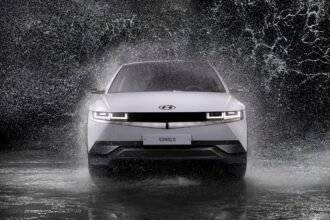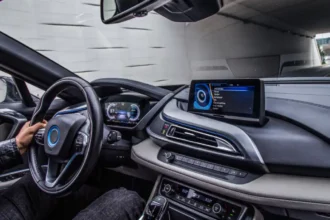Are you thinking about making the switch to an electric vehicle (EV) but wondering how much you could save with government incentives? With electric cars becoming more popular every year, governments and states are stepping up their efforts to encourage the transition. Whether you’re considering buying an EV for environmental reasons or the long-term savings, understanding the different incentives available can make your decision even easier.
In this guide, we’ll dive into the world of EV incentives, breaking down everything you need to know. From federal tax credits to state-specific rebates, we’ll cover it all—helping you take advantage of the best deals.
What Are EV Incentives?
EV incentives are financial programs designed to encourage the adoption of electric vehicles by lowering the cost of purchase, leasing, or operation. These incentives can come in various forms, including tax credits, rebates, reduced registration fees, and even free access to carpool lanes. Both federal and state governments offer these incentives, often in conjunction with utility companies that provide rebates for home chargers or reduced electricity rates for EV owners.
Why Are EV Incentives Important?
The primary goal of EV incentives is to accelerate the adoption of electric vehicles, which help reduce carbon emissions and reliance on fossil fuels. By lowering the upfront cost of buying an EV or offsetting costs through tax credits, incentives make electric cars more affordable for the average consumer. The faster EV adoption rates grow, the closer we move toward a cleaner, more sustainable future.
Types of EV Incentives Available
There are various types of incentives that you can take advantage of, and they differ from state to state. Here’s a detailed breakdown:
1. Federal EV Tax Credit
The federal government offers a tax credit of up to $7,500 for new electric vehicles. The amount you receive depends on the vehicle’s battery capacity and manufacturer, as the credit starts to phase out after a manufacturer sells 200,000 qualifying vehicles. Some popular EVs, like the Tesla Model 3, no longer qualify for this federal tax credit.
How the Federal EV Tax Credit Works:
- The credit is applied when you file your taxes for the year you bought the car.
- It reduces the amount of income tax you owe, but it won’t result in a refund if your tax bill is less than the credit amount.
- Only new EVs qualify, and the vehicle must be primarily used in the U.S.
2. State EV Rebates
Many states offer cash rebates when you purchase or lease an EV. The value of these rebates can vary significantly. For example, California’s Clean Vehicle Rebate Project (CVRP) offers up to $4,500 for low-income applicants purchasing an eligible electric vehicle, while Colorado offers a flat $2,000 rebate.
Notable State EV Rebate Programs:
- California: Up to $7,500 in rebates (including additional incentives for low-income households).
- New York: Up to $2,000 in rebates through the Drive Clean Rebate Program.
- Colorado: A flat $2,000 rebate on eligible EV purchases.
3. Utility Company Rebates
Some utility companies provide rebates to help cover the cost of installing home charging equipment or offer discounts on electricity rates for charging your EV during off-peak hours. For example, Pacific Gas and Electric (PG&E) in California provides rebates of up to $800 for customers who install a Level 2 charger at home.
4. Local and Regional Incentives
Some cities and counties offer additional incentives such as reduced vehicle registration fees, free parking in certain areas, or discounted tolls for electric vehicle owners. For instance, San Jose, California, offers free parking for EVs at certain city-operated parking facilities.
How to Apply for EV Incentives
Understanding how to apply for these incentives is key to maximizing your savings. The process can vary depending on the type of incentive you’re pursuing.
Federal Tax Credit Application
To apply for the federal EV tax credit, you’ll need to fill out IRS Form 8936 when you file your annual taxes. Make sure you keep all the paperwork from your EV purchase, as you’ll need to report the vehicle’s make, model, and VIN.
State Rebates
For state rebates, most states have online portals where you can apply after purchasing or leasing an EV. Make sure to check the program requirements, as some rebates require pre-approval before making your purchase. You’ll often need:
- Proof of residency
- Vehicle registration
- Purchase or lease agreement
Utility Rebates
To apply for a utility rebate, check with your local electricity provider. Some companies offer rebates for both EV purchases and home charger installations. Be sure to submit the required paperwork, including your vehicle’s VIN and proof of purchase, and adhere to the application deadlines.
Key EV Incentives by State
| State | Rebate Amount | Additional Perks |
|---|---|---|
| California | Up to $7,500 | Access to HOV lanes, low-income bonuses |
| New York | Up to $2,000 | Discounted tolls, utility rebates |
| Colorado | $2,000 flat rebate | Reduced registration fees |
| Massachusetts | Up to $2,500 | Free public parking |
| Texas | Up to $2,500 | Access to HOV lanes |

FAQs About EV Incentives
Q1: What happens if I don’t owe enough taxes to claim the full federal EV tax credit?
A1: The federal EV tax credit is non-refundable, which means it will only reduce your tax liability to zero. If you don’t owe enough in taxes to claim the full credit, you won’t receive the remaining balance as a refund.
Q2: Can I claim both federal and state EV incentives?
A2: Yes, you can combine both federal and state incentives, as well as any rebates from your local utility company or regional programs. Each program operates independently, so taking advantage of multiple incentives can significantly lower your overall cost.
Q3: Do used electric vehicles qualify for incentives?
A3: Generally, the federal tax credit only applies to new vehicles. However, some state and local programs may offer rebates or incentives for used EV purchases.
Q4: Are leased electric vehicles eligible for incentives?
A4: Yes, many incentives also apply to leased vehicles, but the federal tax credit often goes to the leasing company, which may pass on the savings to you in the form of lower lease payments.
Q5: Do hybrid vehicles qualify for EV incentives?
A5: Plug-in hybrid electric vehicles (PHEVs) do qualify for some EV incentives, including a smaller federal tax credit, depending on the battery size. However, traditional hybrids that don’t plug in do not qualify.
Conclusion
Electric vehicles are becoming a more viable option for a wider range of drivers, thanks in large part to the incentives available at the federal, state, and local levels. Understanding these programs can help you save thousands of dollars, making the transition to an EV both affordable and rewarding. Whether you’re buying new, leasing, or even looking for ways to save on charging at home, now is the perfect time to explore your options and cash in on these great incentives.









